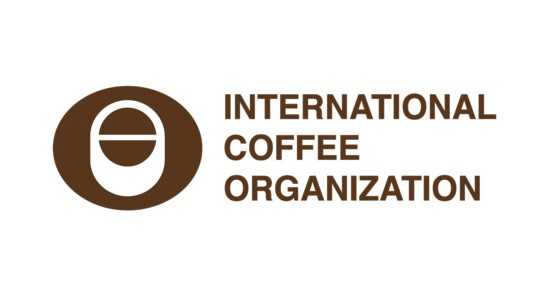LONDON, UK – In March 2019, the ICO composite indicator fell by 3.1% to 97.50 US cents/lb, which is the lowest monthly average since October 2006 when the price was 95.53 US cents/lb. Prices for all group indicators fell in March 2019, with Brazilian Naturals registering a decrease of 4.2% to 95.81 US cents/lb, the largest among the four group indicators.
Shipments in the first five months of coffee year 2018/19 increased by 6.2% to 52.27 million bags, reflecting the ample supply of coffee on the international market. Shipments of Brazilian Naturals rose by 20.4% to 18.65 million bags, and Colombian Milds grew by 7.7% to 6.63 million bags.
World production in coffee year 2018/19 is estimated at 168.05 million bags while consumption is estimated at 164.99 million bags, creating a surplus of 3.06 million bags. This follows a surplus of 4.16 million bags in coffee year 2017/18.
The monthly average of the ICO composite indicator fell by 3.1% to 97.50 US cents/lb in March 2019. This is the lowest monthly average since October 2006 when the price was 95.53 US cents/lb. The daily composite indicator generally declined over the month, starting at a high of 99.61 US cents/lb on 1 March 2019 and reaching a low of 96.23 US cents/lb on 22 March 2019. Prospects of a large off-year crop from Brazil for crop year 2019/20 and increased exports in each month of 2018/19 compared to the previous year are contributing to the sustained low prices this coffee year.
Price movements for all group indicators fell in March 2019. Prices for Brazilian Naturals decreased by 4.2% to 95.81 US cents/lb, which is the lowest price for this group since July 2006. Prices for Colombian Milds declined by 2.1% to 125.23 US cents/lb while Other Milds fell by 3.6% to 123.89 US cents/lb.
In terms of differentials, Colombian Milds frequently traded above Other Milds in March, resulting in a differential of 1.34 US cents/lb for the month, reversing the trend of a negative differential last month. Prices for Robusta fell by 2.1% to 76.96 US cents/lb. In March, the arbitrage between Arabica and Robusta coffees, as measured on the New York and London futures markets narrowed further, decreasing by 10% to 30.23 US cents/lb. The last time arbitrage had reached this level was in March 2003, with a difference of 30.84 US cent/lb between the New York and London futures prices. Intra-day volatility of the ICO composite indicator price decreased by 0.2 percentage points to 5.7% as the intra-day volatility of Robusta increased by 0.1 percentage point while it decreased for all Arabica indicators.
In February 2019, world coffee exports amounted to 10.16 million bags, 3.2% higher than in February 2018. Increased shipments of Brazilian Naturals and Colombian Milds offset declines in Other Milds and Robusta. Compared to February 2018, exports of Brazilian Naturals grew by 27.7% to 3.46 million bags, and exports of Colombian Milds rose by 12.4% to 1.39 million bags in February 2019. In contrast, shipments of Robusta fell by 4.9% to 3.21 million bags, and shipments of Other Milds decreased by 16.8% to 2.11 million bags. In the first five months of 2018/19, total exports grew by 6.2% to 52.27 million bags. Exports of all types, except for Other Milds, increased compared to the first five months of 2017/18. Shipments of Brazilian Naturals rose by 20.4% to 18.65 million bags, and Colombian Milds grew by 7.7% to 6.63 million bags. Robusta exports in coffee year 2018/19 rose by 2.5% to 17.93 million bags. However, shipments of Other Milds fell by 10.1% to 9.05 million bags.
World production in coffee year 2018/19 is estimated at 168.05 million bags compared to 165.54 million bags in 2017/18. The largest growth occurred in South America, where output increased by 4.4% to 80.42 million bags.
Brazil’s 2018/19 crop year production has been revised upwards to 62.5 million bags since last month’s report. This in turn has caused global production to increase in both coffee year 2017/18 and 2018/19. Brazil’s exports in the first five months of the coffee year are 29.7% higher than one year ago, reaching 18.32 million bags. Shipments from Brazil have been supported by the weakness of the Brazilian real against the US dollar in the past few months. Colombia’s production is estimated to rise by 2.7% to 14.2 million bags in coffee year 2018/19. In February 2019, it exported 1.26 million bags of coffee, and its shipments in October 2018 to February 2019, grew by 6.1% to 6.01 million bags.
Africa is estimated to harvest 17.74 million bags in 2018/19, an increase of 1.4% over 2017/18. The top three producing countries in Africa are all estimated to increase their output in 2018/19. Notably, Côte d’Ivoire’s production is estimated to rise by 9% to 1.6 million bags. This is reflected in the growth of their shipments in the first five months of coffee year 2018/19, which more than doubled to 617,241 bags compared to last year when they reached 243,155 bags.
Production in Central America & Mexico is estimated to decline by 0.5% to 21.72 million bags. Production in Honduras is estimated down 1.5% to 7.45 million bags following record production in 2017/18. Shipments from Honduras declined by 19.4% to 2.01 million bags, which largely accounts for the fall in Other Milds group’s exports this coffee year. Production in Mexico, the second largest producer in the region, is estimated to increase by 2.5% to 4.5 million bags, and output from Guatemala, the region’s third largest, is estimated to increase 1.1% to 3.9 million bags.
In Asia & Oceania output is estimated to decrease by 2% to 48.18 million bags. Vietnam’s production is estimated at 29.5 million bags, 3.4% lower than in 2017/18 due to lower than expected yields. Vietnam’s exports in February 2019 fell by 22.7% to 1.7 million bags compared to February 2018, but its shipments in the first five months of coffee year 2018/19 rose by 0.4% to 11.2 million bags. Output from Indonesia, the region’s second largest producer and the world’s fourth largest, is estimated to decrease by 5.6% to 10.2 million bags in crop year 2018/19. Its exports from April 2018 to February 2019 were 4.75 million bags, 36% lower than last year.
World consumption in coffee year 2018/19 is estimated at 164.99 million bags compared to 161.38 million bags in 2017/18. The largest growth occurred in Asia & Oceania where consumption increased by 4.4% to 36.9 million bags. Demand in Africa is estimated to rise by 2.5% to 11.17 million bags, and in North America by 2.2% to 30.61 million bags. Europe’s consumption is estimated to increase by 1.5% to 53.82 million bags, and South America’s consumption is estimated 1% higher at 27.24 million bags. However, demand in Central America & Mexico is expected to slow, with an increase of 0.2% to 5.27 million bags.
In coffee year 2018/19, production is estimated to surpass consumption by 3.06 million bags, which is the second year of surplus. In 2017/18, there was a surplus of 4.16 million bags, following a deficit of 366,000 bags in coffee year 2016/17. This overhang of supply has greatly contributed to current low prices.















